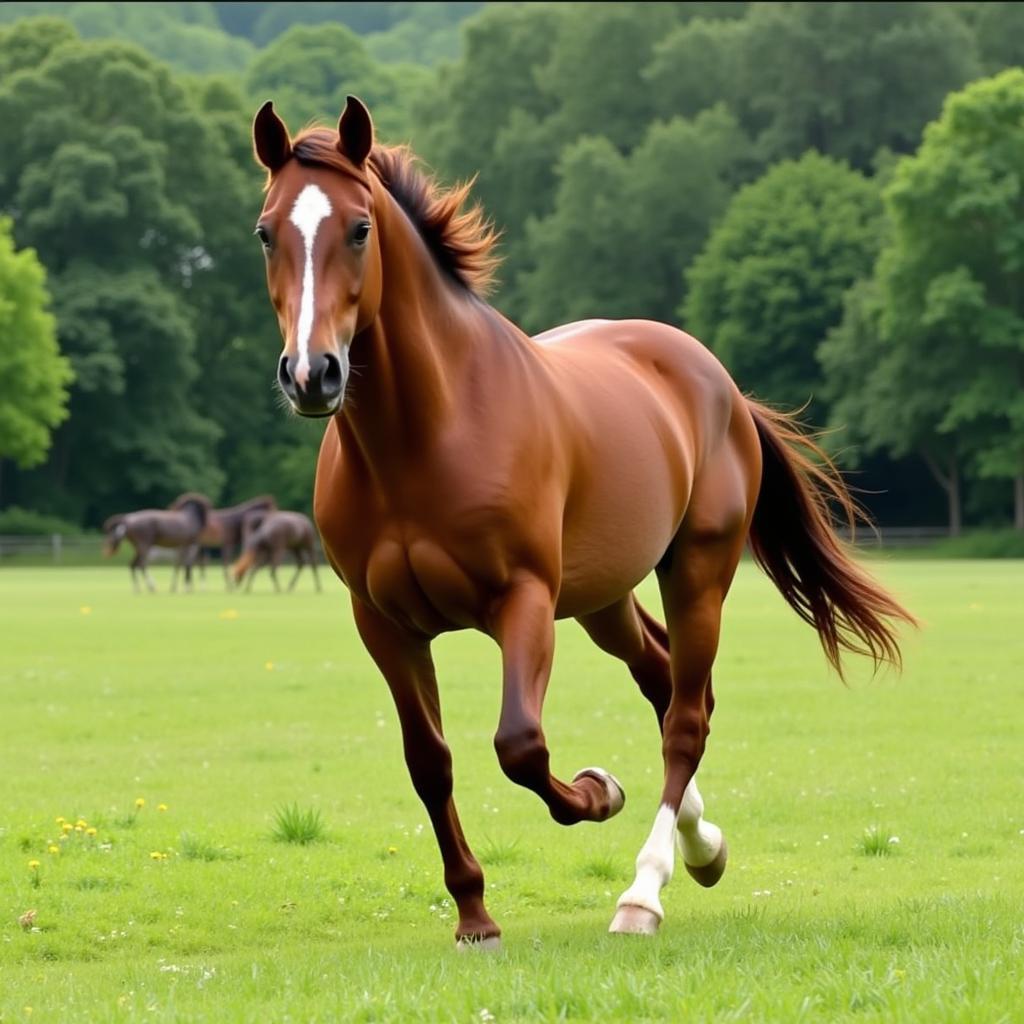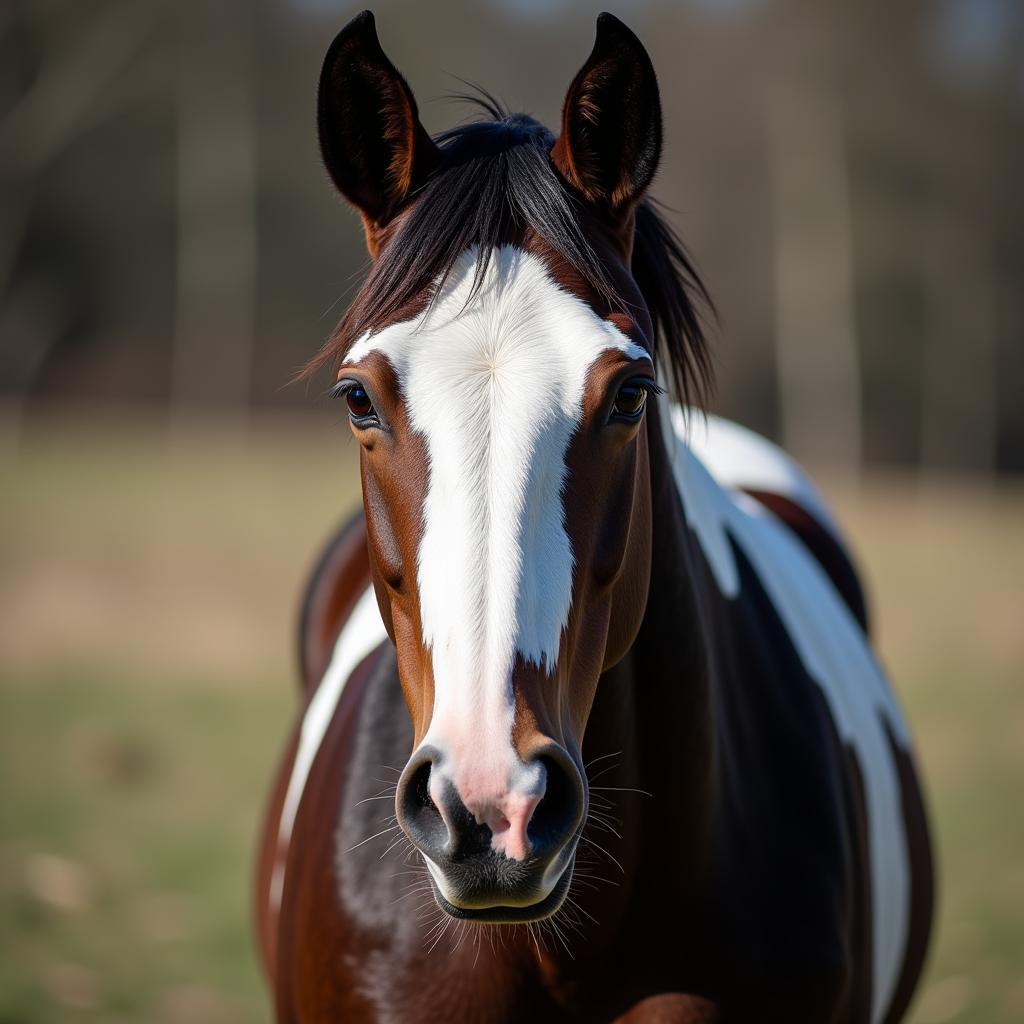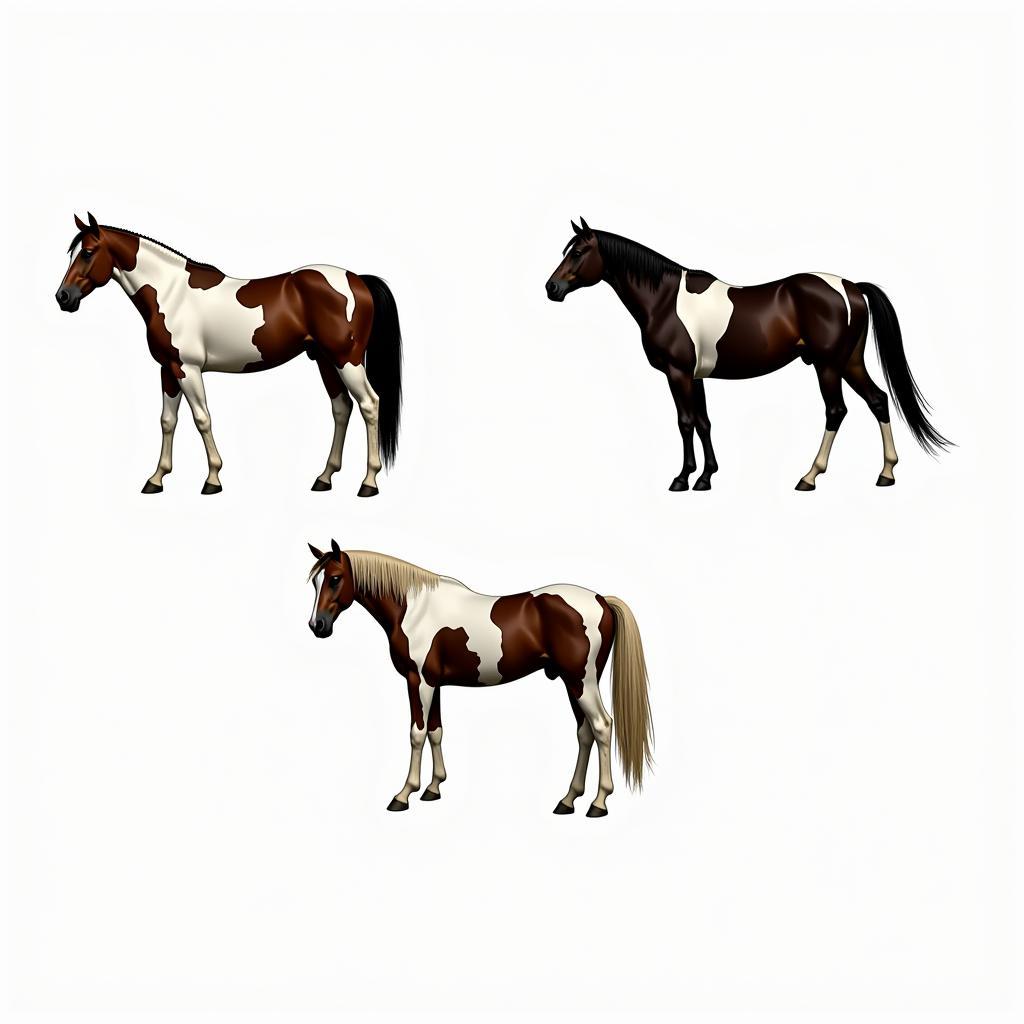Quarter Horses and Paint Horses are two of the most popular breeds in the United States, prized for their versatility, gentle temperaments, and striking appearances. While they share some similarities, there are key differences between Quarter Horses and Paint Horses that make each breed unique. Understanding these distinctions can help you decide which breed best suits your riding style and lifestyle.
A Colorful History: Unveiling the Roots of Quarter Horses and Paint Horses
Both Quarter Horses and Paint Horses have rich histories intertwined with the American West.
The Quarter Horse, aptly named for its incredible speed over a quarter mile, descended from Colonial Spanish horses crossed with English Thoroughbreds. Their agility, strength, and cow sense made them indispensable to ranchers and cowboys.
Paint Horses, on the other hand, trace their lineage back to the colorful horses brought to America by Spanish explorers. These horses, often with distinctive spotted coats, became prized for their beauty and athleticism.
 Quarter Horse running in a field
Quarter Horse running in a field
Beyond the Colors: Distinguishing Features of Quarter Horses and Paint Horses
While both breeds are typically stocky and muscular, subtle differences in their conformation exist.
-
Quarter Horses: Known for their powerful hindquarters, broad chests, and short, strong backs. They typically stand between 14.3 and 16 hands high.
-
Paint Horses: Share a similar build to Quarter Horses but may exhibit slightly more variation in conformation due to the influence of different bloodlines within the breed. They also fall within the 14.2 to 16 hand height range.
 Close up of a Paint horse's face
Close up of a Paint horse's face
The Paint Horse Palette: Unraveling the Language of Coat Patterns
The most striking difference between Quarter Horses and Paint Horses lies in their coats. While Quarter Horses come in a wide array of solid colors, Paint Horses boast vibrant patterns that make them truly stand out. The American Paint Horse Association (APHA) officially recognizes three coat patterns:
-
Tobiano: Characterized by large, rounded white markings that typically cross the back, resembling a “painted” look. The legs are usually white, and the head markings often resemble those of a solid-colored horse.
-
Overo: The inverse of Tobiano, with dark color overlying white. Overo patterns are often irregular and asymmetrical, with white markings usually appearing on the horse’s underside, flanks, and neck.
-
Tovero: A combination of Tobiano and Overo characteristics, resulting in more intricate and variable patterns.
 Paint horse coat patterns: tobiano, overo, tovero.
Paint horse coat patterns: tobiano, overo, tovero.
Temperament and Trainability: Finding the Right Partner
Both Quarter Horses and Paint Horses are known for their gentle, willing dispositions and intelligence, making them suitable for riders of all skill levels.
-
Quarter Horses: Their calm, trainable nature makes them ideal for a wide range of disciplines, including ranch work, Western riding, and English disciplines.
-
Paint Horses: Similarly versatile, Paint Horses excel in various disciplines, often showcasing the same cow sense and athleticism as Quarter Horses.
Ultimately, the best breed for you depends on your individual preferences and riding goals.
Choosing Your Equine Companion: Quarter Horse vs. Paint Horse
Do you dream of competing in high-speed races or showcasing your skills in the show ring? A Quarter Horse’s natural athleticism and quick reflexes might be the perfect fit.
Are you captivated by the unique beauty and colorful patterns of Paint Horses? Then embracing the vibrant personality of a Paint Horse could be your calling.
No matter your choice, both Quarter Horses and Paint Horses promise rewarding partnerships built on trust, versatility, and a shared love for the equestrian life.
Frequently Asked Questions:
1. Can a Quarter Horse have a Paint coat?
While a Quarter Horse can carry the genes for coat patterns, to be registered as a Paint Horse with the APHA, a horse must have a Paint parent and exhibit a recognizable Paint coat pattern.
2. Are Paint Horses as fast as Quarter Horses?
While Quarter Horses are renowned for their speed over short distances, Paint Horses can be surprisingly quick and agile. Many Paint Horses excel in speed events, demonstrating their athletic versatility.
3. Which breed is better for beginners?
Both Quarter Horses and Paint Horses are known for their gentle, forgiving natures, making them suitable for beginner riders. Ultimately, the best horse for a beginner is one that is well-trained, even-tempered, and matched to the rider’s experience level.
4. What disciplines are Paint Horses best suited for?
Paint Horses, like Quarter Horses, are incredibly versatile. They excel in various disciplines, including Western pleasure, trail riding, ranch work, and even English riding.
5. How can I learn more about Quarter Horses and Paint Horses?
Numerous resources are available to help you delve deeper into the world of these remarkable breeds. Reputable breeders, breed associations, and online forums offer a wealth of information.
Need help choosing the right breed for you? Contact us at Phone Number: 0772127271, Email: [email protected] or visit us at QGM2+WX2, Vị Trung, Vị Thuỷ, Hậu Giang, Việt Nam. Our 24/7 customer support team is ready to assist you!